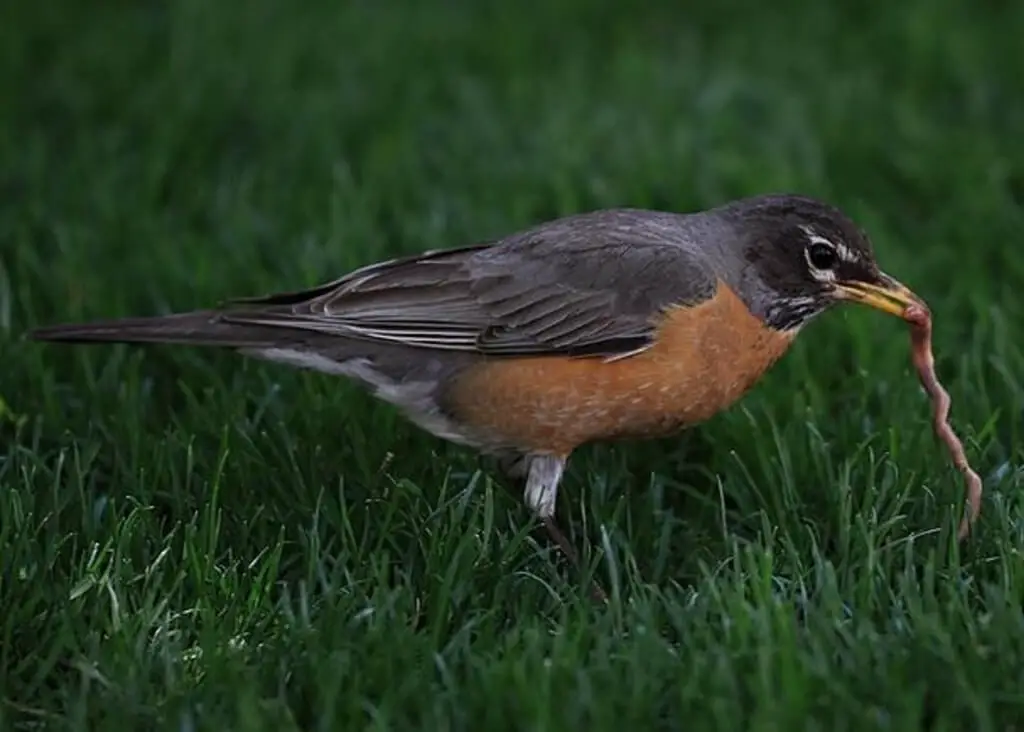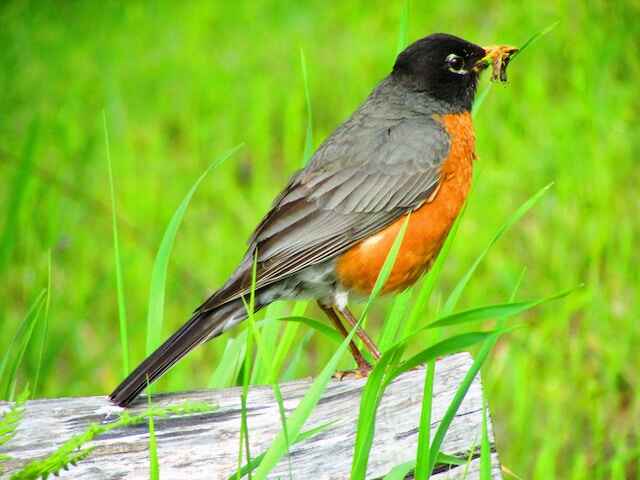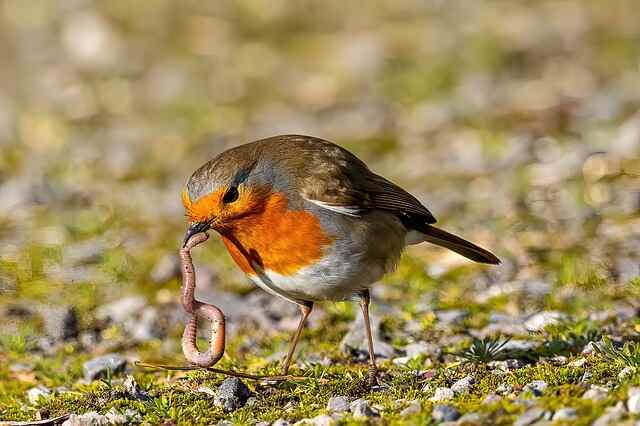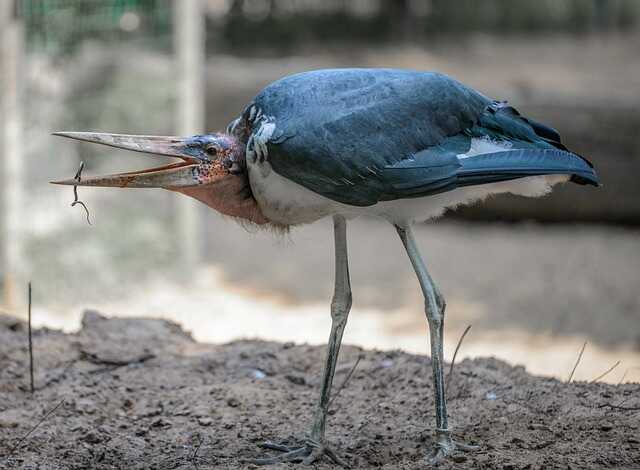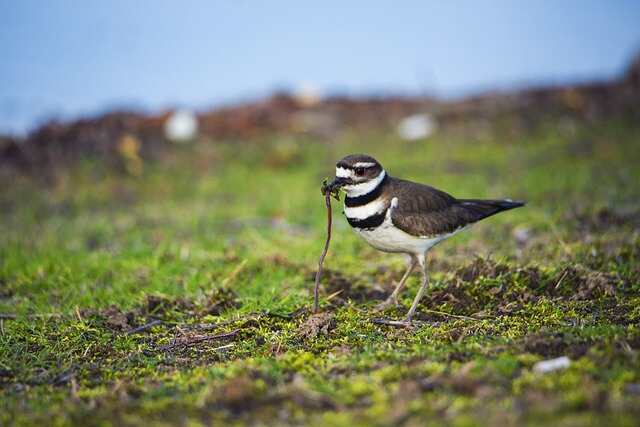Welcome to this exciting exploration of bird behavior and their remarkable ability to detect and locate worms. Birds have evolved fascinating foraging techniques and feeding strategies to sustain themselves in their search for this essential food source. Join me as we unravel the secrets behind their worm locating mechanisms and dive into the intricate world of avian feeding habits.
Table of Contents
- 1 Key Takeaways:
- 2 How Do Birds Find Worms?
- 3 The Importance of Worms in the Ecosystem
- 4 Worms as a Food Source for Birds
- 5 Bird Foraging Techniques for Worm Detection
- 6 Factors Affecting Bird Feeding Habits
- 7 Bird Adaptations for Worm Prey Detection
- 8 Worm Gathering Techniques in Different Bird Species
- 9 The Role of Water in Bird-Worm Interactions
- 10 Human Intervention to Support Birds’ Access to Worms
- 11 The Connection Between Bird, Worms, and Ecosystem Health
- 12 Conclusion
- 13 FAQs
- 13.1 How do birds find worms in winter?
- 13.2 Do birds kill worms before eating them?
- 13.3 Can birds hear worms?
- 13.4 How many worms does a robin eat in a day?
- 13.5 What do birds do with the worms?
- 13.6 Why do worms come out when it rains?
- 13.7 What kind of bird catches worms?
- 13.8 How do birds know where the worms are under the ground?
- 13.9 Where can a worm hide from a bird?
- 13.10 What are some names of birds that eat worms and insects?
- 13.11 Can worms feel pain?
- 13.12 How long do worms live?
- 13.13 What happens when a bird eats a worm?
- 13.14 What role do worms play in the ecosystem?
- 13.15 Why do birds eat worms?
- 13.16 What factors influence bird feeding habits?
- 13.17 How do birds adapt to detect worm prey?
- 13.18 How do different bird species gather worms?
- 13.19 What role does water play in bird-worm interactions?
- 13.20 How can humans support birds’ access to worms?
- 13.21 What is the connection between birds, worms, and ecosystem health?
- 14 Source Links
- 15 Author
Key Takeaways:
- Birds have developed various techniques to locate and capture worms for their diet and survival.
- Worms play a vital role in the ecosystem by enriching the soil and providing food for other creatures.
- Birds consider worms as one of their primary food sources, providing necessary protein in their diet.
- Birds employ visual scanning, probing, listening, and even the sense of smell to detect and locate worms.
- Environmental factors such as weather conditions and ecosystem changes can influence bird feeding habits.
How Do Birds Find Worms?
Birds use a combination of visual and auditory signals, as well as possibly vibrotactile and olfactory inputs, to locate worms. Vision plays a significant role; many bird species have keen eyesight and can spot the movement of worms on the ground. They may also use their beaks to probe the soil for vibrations caused by the movement of worms beneath the surface.
The Importance of Worms in the Ecosystem
Worms are unsung heroes in the ecosystem, playing a vital role in soil enrichment and serving as natural recyclers. Their presence creates a network of worm pathways that allow for better air and water penetration into the soil, promoting healthier plant growth and supporting the overall balance of the ecosystem.
These remarkable creatures contribute to soil fertility by recycling organic matter, including plant litter and decomposing animal waste. As worms consume these materials, they break them down and excrete nutrient-rich castings, which serve as a natural compost. This compost, full of essential nutrients like nitrogen, phosphorus, and potassium, enhances plant growth and supports the overall health of the ecosystem.
Studies have shown that soils with worms have significantly higher nitrogen content compared to soils without worms. This is because worms biologically transform organic nitrogen into forms that are readily available for plant uptake. Their activities also help to improve soil structure, reducing erosion and increasing its ability to retain moisture.
| Benefits of Worms in the Ecosystem | |
|---|---|
| Soil enrichment through nutrient-rich castings | Enhanced plant growth and productivity |
| Increase in soil nitrogen content | Improved soil structure and moisture retention |
| Promotion of nutrient cycling | Contribution to overall ecosystem balance |
Worms truly are the unsung heroes of the ecosystem, diligently working beneath the surface to create a healthier and more sustainable environment for all. Their contributions may often go unnoticed, but understanding and appreciating their role is crucial for maintaining the delicate balance of our planet.
Worms as a Food Source for Birds
As birds navigate their environment in search of sustenance, worms play a crucial role in their diet. Birds consider worms as one of their primary food sources, providing essential protein to support their avian diet. Worms serve as a nutritious prey item, fulfilling the nutritional needs of a wide range of bird species.
Worm consumption contributes significantly to the overall health and well-being of birds. The protein content found in worms is vital for their growth, development, and overall energy levels. Birds have evolved to recognize the value of worms as a high-quality food source, showcasing their innate ability to identify and target these wriggling creatures in their foraging endeavors.
Feeding on worms allows birds to obtain the necessary nutrients required for their survival. Worms are rich in protein and offer a readily available source of energy. By incorporating worms into their diet, birds can sustain their physical health, enhance their breeding capabilities, and maintain their population’s stability within the ecosystem.
The Importance of Worms in Avian Diet
Worms are a fundamental component of the avian diet due to their high nutritional value. Despite variations in bird species, the consumption of worms remains consistent across avian populations. The protein content in worms aids in the development and maintenance of feathers, muscles, and organs, ensuring birds are in optimal condition to carry out their daily activities.
Moreover, the high protein content in worms enables birds to meet their energy requirements. This energy is essential for activities such as flying, hunting, and breeding. By feasting on worms, birds can replenish their energy reserves, supporting their overall survival and contributing to the stability of the avian ecosystem.
| Avian Diet Benefits | Worms as a Food Source |
|---|---|
| High protein content | ✔ |
| Readily available energy source | ✔ |
| Maintains physical health and feather quality | ✔ |
| Fuels breeding activities | ✔ |
Bird Foraging Techniques for Worm Detection
Birds employ various foraging techniques to detect and locate worms. Their remarkable adaptation and behavior enable them to effectively hunt for this essential food source. Let’s explore some of the strategies birds use to detect and capture worms.
Visual Scanning:
Many bird species rely on their keen eyesight to locate worms. They scan the ground or vegetation, looking for any movement or visual cues that indicate the presence of worms. This technique is particularly effective in open areas where worms are more visible.
Probing and Pecking:
Certain bird species, such as robins, have specialized beaks that are well-suited for probing the ground. They insert their beak into the soil and use it to extract worms hiding underneath. By pecking and probing, birds can quickly locate and capture worms, even when they are not readily visible.
Listening for Sounds:
Some birds have developed the extraordinary ability to detect the sounds worms make while moving underground. They use their acute hearing to pick up subtle vibrations or rustling sounds created by worms as they burrow through the soil. This enables the birds to pinpoint the precise location of the worms and seize their prey with precision.
Using their Sense of Smell:
While not all bird species rely on their sense of smell, some birds have been observed using this sense to locate worms. They can detect the chemical cues left by worms in the soil, helping them identify areas where worms are likely to be found. This allows them to concentrate their foraging efforts in the most productive locations.
By employing a combination of these foraging techniques, birds maximize their chances of detecting and capturing worms. Whether it’s the visual scanning, probing, listening for sounds, or using their sense of smell, birds have honed their skills to become expert worm hunters.
| Foraging Technique | Description | Examples of Bird Species |
|---|---|---|
| Visual Scanning | Relies on keen eyesight to search for visual cues and movements indicating worm presence | Robins, blackbirds, starlings |
| Probing and Pecking | Uses specialized beaks to probe the ground and extract worms from underneath | Robins, thrushes, woodcocks |
| Listening for Sounds | Detects subtle vibrations or rustling sounds made by worms moving underground | Snipes, sandpipers, curlews |
| Using Sense of Smell | Detects chemical cues left by worms in the soil to identify areas with high worm presence | Kiwis, kiwi birds, turkey vultures |
Factors Affecting Bird Feeding Habits
When it comes to bird feeding habits, several environmental factors can influence their behavior and food search patterns. It is essential to understand these factors to gain insight into the intricate relationship between birds, worms, and their ecosystem. Let’s explore some of the key elements that can impact bird feeding habits.
Weather Conditions
Weather plays a significant role in determining bird feeding habits. For example, during periods of heavy rainfall, worms may come to the surface, making them more accessible to birds. Conversely, drought conditions can lead to a decrease in worm availability, forcing birds to explore alternative food sources. Extreme weather events, such as storms or heatwaves, can disrupt the worms’ natural habitat, further influencing bird feeding patterns.
Ecosystem Changes
The health and composition of the ecosystem directly affect the availability of worms. Human activities such as urbanization, deforestation, and agricultural practices can alter the natural habitat of worms, impacting their population and distribution. As a result, birds may need to adapt their feeding habits to cope with these changes. Preserving and restoring natural habitats can help maintain a stable worm population and support healthy bird foraging behaviors.
Other Environmental Factors
Aside from weather conditions and ecosystem changes, various other factors can influence bird feeding habits. These include the availability of alternative food sources, predator-prey interactions, and competition among bird species. Additionally, factors like noise pollution and light pollution can disrupt bird feeding behaviors, causing stress and affecting their ability to locate worms.
| Environmental Factors | Impact on Bird Feeding Habits |
|---|---|
| Weather Conditions | Determines worm availability |
| Ecosystem Changes | Alters worm population and distribution |
| Availability of Alternative Food Sources | Influences bird diet preferences |
| Predator-Prey Interactions | Affects bird feeding behaviors |
| Competition Among Bird Species | Can limit access to worms |
| Noise and Light Pollution | Disrupts bird foraging behaviors |
Understanding the impact of these environmental factors on bird feeding habits is essential for conservation efforts and ensuring the well-being of both birds and their ecosystems. By preserving natural habitats, reducing pollution, and promoting sustainable practices, we can support and protect the delicate balance between birds, worms, and the environment they depend on.
Bird Adaptations for Worm Prey Detection
Birds have evolved remarkable adaptations that enable them to detect and capture worms with precision. These adaptations involve their unique sensory organs and specialized anatomical features.
Visual Acuity:
One of the key adaptations in birds for worm prey detection is their exceptional visual acuity. Birds have well-developed eyesight that allows them to spot worms from a distance. Their keen sense of depth perception helps them accurately judge the location of worms in the soil.
Acute Hearing:
Many bird species can detect subtle sounds made by worms beneath the surface of the ground. They have the ability to filter out background noise and focus on the faintest vibrations produced by worms as they move through the soil.
Specialized Beak Shapes:
Different bird species have evolved specialized beak shapes that aid in worm prey detection. For example, thrushes and robins have slender beaks that can probe the ground and extract worms. Woodcocks, on the other hand, have long, sensitive beaks that can pick up vibrations from buried worms.
| Bird Species | Beak Shape | Worm Prey Detection Strategy |
|---|---|---|
| Thrushes | Slender and Pointed | Probing the ground to extract worms |
| Woodcocks | Long and Sensitive | Detecting vibrations from buried worms |
“Birds have evolved remarkable adaptations to locate and capture worms. Their sharp eyesight, acute hearing, and specialized beaks enable them to detect and extract these essential prey items.” – Dr. Jane Wilson, Avian Biologist
Sense of Ground Vibrations:
Some bird species have the ability to sense vibrations in the ground caused by worm movement. This adaptation allows them to pinpoint the exact location of worms, even when they are hidden deep beneath the surface.
Overall, these adaptations in birds for worm prey detection highlight their ability to utilize a range of sensory cues, enabling them to effectively locate and capture worms, ensuring a vital food source for their survival.
Worm Gathering Techniques in Different Bird Species
When it comes to gathering worms, different bird species have evolved unique feeding strategies and techniques. These specialized approaches allow them to effectively extract worms from the ground and secure this vital food source. Let’s explore some fascinating examples of how different birds gather worms:
Robins: Visual Scanning and Quick Movements
Robins are known for their distinctive red breasts and their ability to quickly locate and capture worms. These birds rely on visual scanning to spot wriggling movements on the ground, indicating the presence of worms. Once a worm is detected, robins use their sharp beaks to swiftly extract it from the soil. Their quick movements and keen eyesight make them efficient worm gatherers.
Ibises: Beak Probing
Ibises, with their long, curved beaks, employ a different technique for gathering worms. They use their specialized beaks to probe deep into the soil, searching for hidden worms. By inserting their beaks into the ground, ibises can extract worms that are beyond the reach of other bird species. This unique feeding strategy allows ibises to access a larger number of worms compared to birds that rely solely on visual scanning or quick movements.
Woodcocks: Tactile Sensing
Woodcocks have developed an exceptional feeding strategy that involves using their long beaks to probe the soil while simultaneously employing their sense of touch. These birds have highly sensitive beaks that allow them to detect vibrations caused by moving worms beneath the ground. By relying on both tactile sensing and beak probing, woodcocks can locate worms with precision, even in areas where worms may be well-hidden.
These are just a few examples of the diverse techniques birds employ to gather worms. Each species has adapted to its unique environment and feeding requirements, showcasing the remarkable diversity of avian foraging strategies. By understanding these feeding techniques, we gain insight into the intricate relationship between birds and their primary food source, highlighting the importance of conserving both bird populations and the natural habitats that sustain them.
The Role of Water in Bird-Worm Interactions
Water plays a significant role in the interactions between birds and worms. It affects both the behavior of worms and their accessibility to birds. When the soil is moist, worms often come to the surface, making them more easily detectable and accessible for birds. This is because moist soil provides a favorable environment for worms, as it allows them to move more easily and facilitates their foraging activities. Birds take advantage of this, using their various foraging techniques to locate and capture worms in these conditions.
“Moisture is key when it comes to bird-worm interactions. Worms are more likely to come to the surface when the soil is damp, making them more visible and accessible to birds. This is especially important for bird species that rely heavily on worms as a food source,” says Dr. Avian Researcher.
Water availability also affects worm behavior. During periods of dryness, worms may burrow deeper into the soil to find moister areas, making them less accessible to birds. This behavior can influence bird feeding patterns and potentially impact their dietary intake of worms. Understanding the role of water in bird-worm interactions can provide valuable insights into the dynamics of avian foraging and the importance of moisture in supporting the availability of this crucial food source for birds.
Human Intervention to Support Birds’ Access to Worms
Birds heavily rely on worms as a vital food source, but environmental changes and habitat loss can impact their access to these essential creatures. As a result, human intervention plays a crucial role in supporting bird populations and promoting bird conservation. By offering supplemental food in the form of mealworms, we can ensure that birds have access to a reliable source of nutrition, especially during times when natural worm availability may be limited.
Feeding birds with mealworms not only provides them with the protein they need but also helps mitigate the potential effects of environmental factors on their feeding habits. By placing mealworms in open feeders or scattered on the ground, we create opportunities for birds to easily locate and consume this supplemental food. This intervention helps maintain a balanced diet for birds and contributes to their overall health and well-being.
Furthermore, offering worms to birds can also be a rewarding and educational experience for bird enthusiasts and nature lovers. Birdwatchers and homeowners can observe different bird species up close as they enjoy the provided mealworms. This interaction fosters a deeper appreciation for the diverse avian species and their fascinating foraging behaviors.
Ultimately, human intervention in the form of offering worms as supplemental food contributes to the conservation efforts for birds. By ensuring their access to vital resources, we help support bird populations, maintain a healthy ecosystem, and promote the delicate balance of nature.
| Benefits of Offering Mealworms to Birds | Supports bird populations | Provides essential protein | Helps mitigate environmental impacts | Promotes bird conservation |
|---|---|---|---|---|
| Enhances overall health and well-being | Creates rewarding and educational experiences | Contributes to a balanced diet | Fosters appreciation for avian species |
The Connection Between Bird, Worms, and Ecosystem Health
The relationship between birds, worms, and the ecosystem is a complex web of interdependence. Birds rely on worms as a vital food source, while worms contribute to soil fertility and overall ecosystem health. This delicate balance highlights the importance of conserving both bird populations and the worm population to maintain a thriving ecosystem.
Worms, as natural recyclers, play a crucial role in the ecosystem by breaking down organic matter, such as plant litter and decomposing animal waste, and turning it into nutrient-rich compost. This compost enriches the soil and provides essential nutrients for plant growth, contributing to the overall health of the ecosystem. Without worms, the soil would become depleted, leading to a decline in plant productivity and negatively impacting the entire food chain.
Birds, on the other hand, play a crucial role in controlling the worm population. By consuming worms, birds help regulate their numbers, preventing overpopulation and maintaining a healthy balance within the ecosystem. Furthermore, the presence of birds can also influence worm behavior, as worms may seek refuge in deeper soil layers when birds are actively foraging, reducing their availability to other organisms.
The Role of Bird Conservation in Ecosystem Balance
Protecting bird populations is not only important for the birds themselves but also for maintaining a balanced ecosystem. Bird conservation efforts aim to preserve habitats, reduce threats, and promote sustainable practices that support bird populations. By ensuring the well-being of birds, we indirectly support the health of the entire ecosystem.
Conserving bird populations helps maintain the delicate balance of the bird-worm relationship. Healthy bird populations control the worm population, preventing overpopulation and the potential negative impacts it can have on the soil and other organisms. Additionally, when bird populations thrive, they contribute to biodiversity and serve as indicators of overall ecosystem health.
| Benefits of Bird Conservation for Ecosystem Balance | Ecosystem Benefits |
|---|---|
| 1. Regulates worm population | Helps prevent overpopulation and maintains balance in the ecosystem. |
| 2. Promotes soil fertility | By consuming worms, birds indirectly contribute to soil enrichment and nutrient cycling. |
| 3. Supports biodiversity | Birds are an integral part of the ecosystem and their presence contributes to overall biodiversity. |
| 4. Indicators of ecosystem health | Healthy bird populations serve as indicators of a well-functioning and balanced ecosystem. |
In conclusion, the connection between birds, worms, and ecosystem health highlights the intricate relationship between different organisms within an ecosystem. Birds rely on worms as a crucial food source, while worms contribute to soil fertility and nutrient cycling. Protecting both bird populations and the worm population is vital for maintaining a balanced and thriving ecosystem.
Conclusion
The fascinating world of bird-worm interaction reveals the intricate balance of nature. Birds, with their remarkable foraging techniques and specialized adaptations, have developed effective ways to detect and capture worms. These avian foraging behaviors, combined with their worm detection mechanisms, contribute to the conservation of ecosystems.
The delicate relationship between birds and worms highlights the importance of ecosystem conservation. Birds rely on worms as a vital food source, while worms play a crucial role in maintaining soil fertility and overall ecosystem health. Understanding and preserving this intricate balance is vital for the well-being of both bird populations and the broader ecosystem.
By studying bird-worm interactions, we gain insights into the interconnectedness of species and the significance of their roles within ecosystems. This knowledge can inform conservation efforts aimed at protecting avian foraging habitats and preserving the populations of both birds and worms. Ensuring the survival of these species ensures the continued functioning and balance of our natural world.
FAQs
How do birds find worms in winter?
Birds find worms in winter by using a combination of vision, sound, and instinct. They may rely on sight to spot worms moving on the ground, listen for the sound of worms burrowing, or use their keen sense of smell to detect the scent of earthworms.
Do birds kill worms before eating them?
Most birds don’t kill worms before eating them. They typically consume live worms. The digestive enzymes in a bird’s stomach break down the worm’s body during the digestion process.
Can birds hear worms?
Yes, birds can hear the subtle sounds made by worms moving through the soil. Their excellent hearing helps them locate worms, especially in situations where visibility is limited, such as in the dark or under dense vegetation.
How many worms does a robin eat in a day?
Robins can eat a significant number of worms daily, sometimes consuming their body weight in worms. On average, a robin may eat 14-16 feet of earthworms each day, providing essential nutrients and energy.
What do birds do with the worms?
Birds use worms as a primary food source, extracting essential nutrients like protein. They play a crucial role in the avian diet, supporting overall health, energy levels, and reproductive success.
Why do worms come out when it rains?
Worms surface during rain as a survival strategy. The moisture helps them travel across the ground more easily, and they come out to avoid drowning in waterlogged soil or to migrate to new areas.
What kind of bird catches worms?
Various bird species catch worms, including robins, blackbirds, thrushes, and starlings. These birds are often ground foragers with specialized bills for probing and extracting worms from the soil.
How do birds know where the worms are under the ground?
Birds use a combination of visual cues, sound, and instinct to locate worms beneath the ground. They may observe subtle movements, listen for burrowing sounds, and rely on their innate ability to sense the presence of prey.
Where can a worm hide from a bird?
Worms seek refuge in soil, leaf litter, and other organic matter to hide from birds. Burrowing into the ground or moving through the soil helps them avoid detection by aerial predators.
What are some names of birds that eat worms and insects?
Birds that feed on worms and insects include robins, blackbirds, bluebirds, thrushes, starlings, and sparrows. Each species has its unique foraging techniques adapted to its environment and preferred prey.
Can worms feel pain?
Worms lack a centralized nervous system and brain, so they likely do not experience pain in the way more complex animals do. Their simple nervous system allows them to react to stimuli but doesn’t suggest an ability to perceive pain.
How long do worms live?
The lifespan of a worm varies by species. Earthworms, commonly consumed by birds, may live for several years under optimal conditions, while other species with shorter lifecycles may only survive for a few weeks.
What happens when a bird eats a worm?
Once a bird consumes a worm, the digestive process begins. Enzymes in the bird’s stomach break down the worm’s body, extracting essential nutrients like protein. The nutrients are then absorbed, supporting the bird’s energy, growth, and overall well-being.
What role do worms play in the ecosystem?
Worms contribute to a healthy ecosystem by enriching the soil, creating pathways for air and water, recycling organic matter, and providing nutrient-rich compost.
Why do birds eat worms?
Worms are a primary food source for birds, providing essential protein in their diet and fulfilling their nutritional needs.
What factors influence bird feeding habits?
Environmental factors such as weather conditions and changes in habitat can affect bird feeding patterns and the availability of worms.
How do birds adapt to detect worm prey?
Birds have evolved adaptations such as sharp eyesight, acute hearing, specialized beak shapes, and the ability to sense vibrations in the ground to aid in the detection of worm prey.
How do different bird species gather worms?
Different bird species employ diverse feeding strategies, including visual scanning, quick movements, and probing deep into the soil with their beaks, to gather worms.
What role does water play in bird-worm interactions?
Water affects bird-worm interactions as worms come to the surface when the soil is moist, making them more accessible to birds. Water also influences worm behavior, as they may burrow deeper into the soil during dry periods.
How can humans support birds’ access to worms?
Humans can provide supplemental food such as mealworms above ground to help birds access worms more easily, especially during times of environmental change. This supports bird conservation efforts.
What is the connection between birds, worms, and ecosystem health?
Birds rely on worms as an essential food source, while worms contribute to soil fertility and overall ecosystem health. Protecting both bird populations and worms is crucial for maintaining a balanced and thriving ecosystem.

